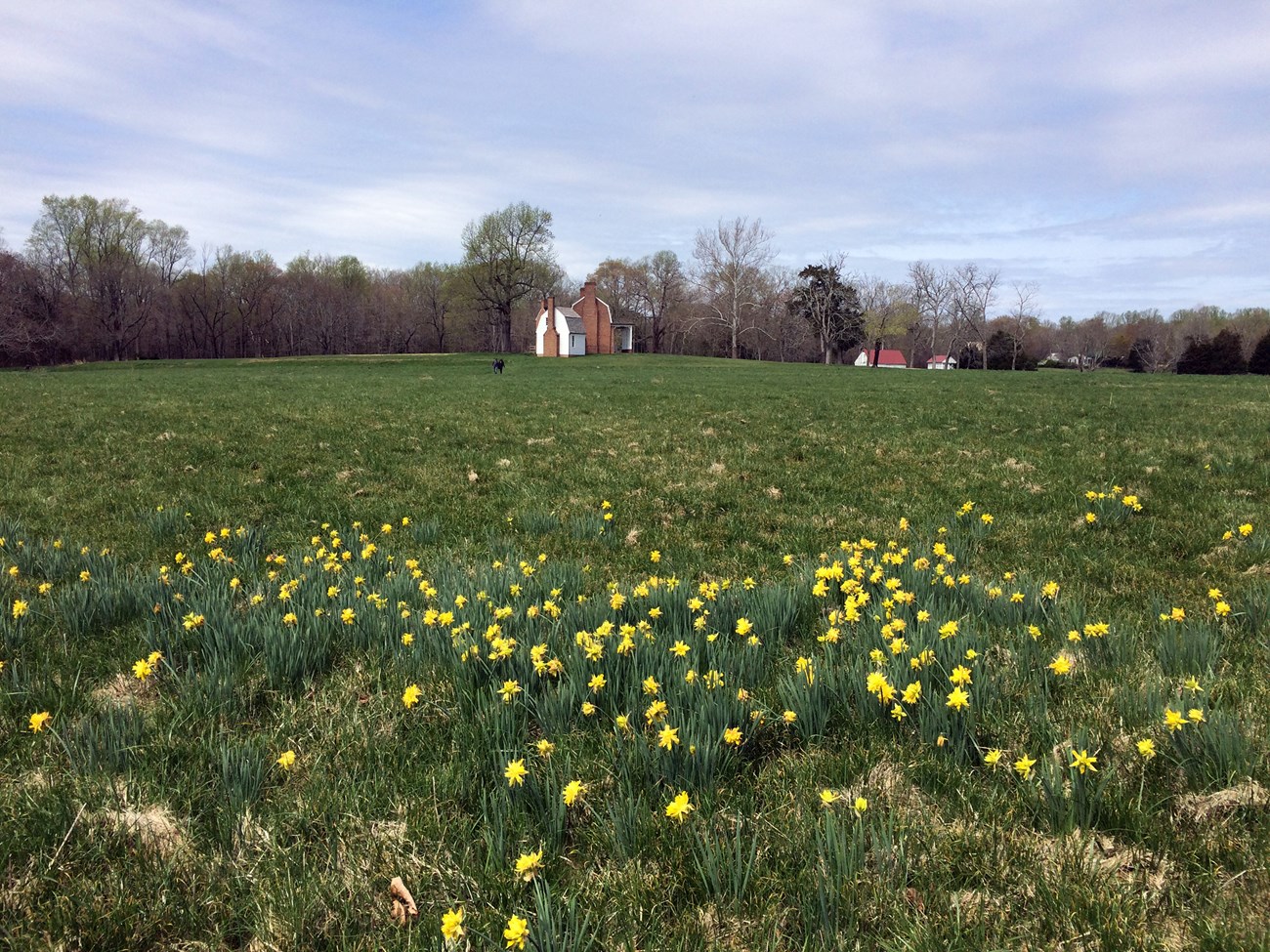Last updated: March 13, 2025
Article
Thomas Stone's Haberdeventure

NPS image
On December 13, 1770, Thomas Stone purchased the 442-acre plantation called “Haberdeventure and Hanson’s Plains Enlarged” from his uncle, Daniel Jenifer.
Two years previously, Stone had married Margaret Brown, whose father had been one of the most prominent physicians in the British Colonies. Although Stone came from a prominent family and he was soon to be a respected lawyer in the colony, Margaret's wealth surpassed his at this time. Oral tradition states that Margaret’s received a reputed dowry of £1,000 and that much of this was used to pay for the property.
By the time of his death in 1787, Stone had expanded his holdings to over 2,000 acres. These tracts included Planter’s Delight, Chandler’s Hills, and Saint Nicholas. Most, but not all, of his property was in the vicinity of Port Tobacco. His most valuable land may have been used not for farming or planting, but for milling. On the east side of the Town of Port Tobacco, Stone owned one of the busiest grist mills in the region.
In 1773, Stone's father and two older brothers (one half-brother and one full brother) passed away. As the eldest surviving child of his father's second marriage, Thomas Stone found himself suddenly responsible for more than just a wife and three children. At various times, as many as five of his siblings and their respective families lived in the house. In addition, Thomas Stone helped mentor two of his brothers into the legal profession.
At the time of its purchase, the land at Haberdeventure was advertised as, “...well watered and wooded, better for farming than planting.” This may have indicated that the soil was not suitable for tobacco production. “Being quite thin land,” most of the farming done at Haberdeventure was designed to produce staple foodstuffs, firewood, wool, and other necessities to support Thomas Stone’s large extended family. Tenant farmers at Haberdeventure paid part of their annual rental fees to Thomas Stone by building new structures, clearing land, and planting orchards.
According to newspaper accounts of the time, Charles County had “plenty of fine Orchards” with numerous apple, peach, cherry, pear and damson pear trees. Stone’s tenant farmers pressed some of the fruit into cider, brandy, or vinegar. The peach brandy distilled in this region was aged for five or six years and according to a visitor to the area in the 1770s, it reputedly surpassed “...every other kind of ardent spirits, in the delicacy of its flavour. Many people prefer it to the best Jamaica spirits, or Cogniac brandy.”
Peach trees were especially common as they bore fruit on even the poorest of land, like that at Haberdeventure. Peaches grown in the 1700s were not as flavorful as those grown today. This meant that peaches were not always grown as food for humans, but sometimes served as food for hogs which Thomas Stone had in abundance. It is worth noting that the sweetness of the peach fruit permeated the hog flesh. The same 1770s visitor to Charles County believed the hogs that were fed “with peaches, ... would sell very dear” in European markets.
It is known that Thomas Stone had both orchards and formal garden terraces on his Haberdeventure property. The latter are still visible on the south side of the mansion. The location and size of the orchards is unclear. It is believed that the orchards were in close proximity to the house, quite possibly on the north side. When Thomas Stone died in 1787, he noted in his will that “…my Brother Michael Jenifer Stone shall have a right to live at the house of Haberdeventure & use the garden, orchards and land.”
Between his multiple tracts of land, Thomas Stone owned numerous dwellings and support structures. A tax assessment in 1783 notes that Stone had “1 good brick dwelling House,” and “nine other necessary houses” at Haberdeventure. It is unclear whether “necessary houses" meant dwelling or domestic support structures.
Due to the poor health of his wife, Margaret, and his own legal and political affairs, Thomas Stone purchased a second home in Annapolis in 1783, and moved the family to the new residence. Both Thomas and Margaret Stone died in 1787, and they were buried close to the house at Haberdeventure in what is now the Stone Family Cemetery.
